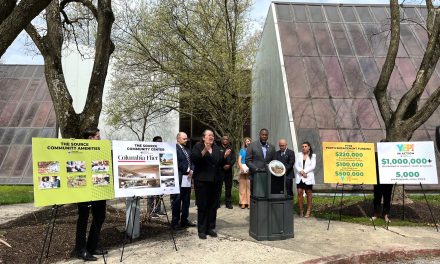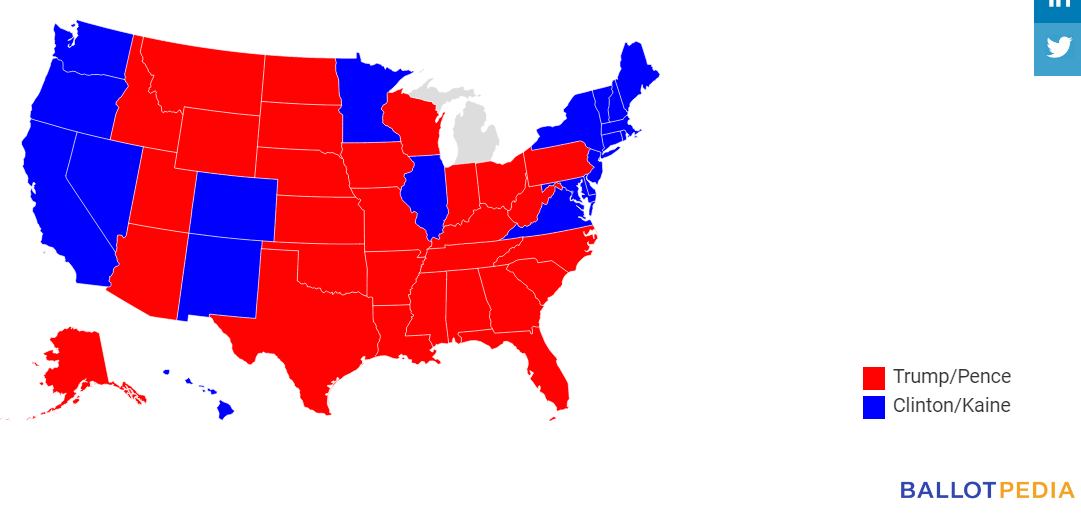At its Feb. 25 meeting, the Montgomery County Council debated a zoning change to allow a pilot program for the development of solar “farms” in the county’s Agriculture Reserve. A watered-down version of the change passed by a vote of 7-2.
The two naysayers, Councilmember Hans Riemer and Council President Tom Hucker, voted correctly, but for the wrong reasons. As the sponsors of the original measure, they wanted to allow more extensive development than their colleagues approved. Actually, the county should have rejected the program outright and, instead, concentrate on promoting rooftop solar panels.
Stripping away euphemism, solar farms have nothing in common with agriculture; indeed they harm our food chain and the environment as a whole.
What proponents like to call solar “farms” really comprise acres of mirrors on metal pikes, stretching for miles to capture the sun. The mirrors, as we recall from our childhood when we focused a hand mirror skyward, concentrate the rays to produce energy. However, these mirrors blot out the sun on the land underneath. Residents with shady plots of land can see that vegetables and most flowers cannot grow under those conditions. (They even need to buy special grass to plant.)
Massive solar installations would crimp the agriculture in the Agriculture Reserve. Indeed, the prestigious Union of Concerned Scientists came to the same conclusion. In a 2013 report, the group recommended that zoning authorities place these energy projects in degraded land, not useful for agriculture, or in “brownfields” (contaminated soil) and abandoned mines.
Asphalt jungles and abandoned shopping malls might work, but not the Agriculture Reserve.
The problems
Proponents of the project acknowledged the problems. They proposed solutions that, wrapped in gobbledygook, sound good, but do not stand up under scrutiny. For example, Councilmember Riemer suggested switching from “commodity crops” to “agrivoltaics.”
In plain English, he suggests replacing food with the few crops that grow in the dark. According to Wikipedia, quoting a study from Denmark concerning lettuce, even then, “agrivoltaics” require a huge investment. Wikipedia calls these efforts “technologically complex.”
Massive solar installations create another problem as well: “vegetation management.” A Cornell University College of Agriculture and Life Sciences post explains that whatever species of vegetation, such as grass, that grows beneath solar panels needs trimming. I assume that means that high growth can interfere with solar energy production or cause other unsafe conditions. Cornell recommends importing sheep to graze beneath the panels.
Sheep
Riemer mentions “solar grazing” as a means to mitigate the economic loss to farmers in the Reserve. Indeed, in World War I sheep kept the White House lawn under control.
However, using sheep in the Agriculture Reserve differs from the White House. Importing sheep costs money. The Cornell post also says that sheep require more secure fences than at typical utility installations, so as not to allow escape. Solar grazing requires protecting the sheep from predators. Also, it requires hiring shepherds.
One might think that the developers will pay for all this. However, the costs will come out in the price of the electricity customers will pay or the county will subsidize with taxpayer money. Besides, given our current knowledge, this will not pan out.
The County Council ignored the expense and other difficulties of building transmission and distribution lines to carry the solar power from the Reserve to the grid. NIMBY (Not in My Backyard) Syndrome will rear its head, not to mention other environmental issues.
Solar power in the proper way
The county should pursue development of solar power, but in the proper way. Unlike windpower, solar does not harm migrating birds or undersea creatures. Solar does not ruin people’s views or make noise. The more logical and cheaper alternative exists in rooftop solar panels.
The county has many roofs in homes and office buildings. Rooftop systems do not require new transmission or distribution lines. Rather, they use existing connections within the buildings. The county can lower costs by allowing owners to reduce their electricity bills by selling excess power back into the grid. Maryland law allows such transactions.
Rooftop solar has drawbacks, but the county can overcome them more cheaply and with less complexity than developing the Reserve. Panels have a short working life. The county should encourage or subsidize improvements. Indeed, over the past two decades, new materials and technology have made panels lighter and more attractive. Education campaigns and creative financing can make rooftop solar more popular and economical.
The county has its heart in the right place. It needs to put its head in the right place as well.







We were recently able to be part of a Maryland Community Solar program. We now get up to 80% of our energy from solar, get a credit every month from PEPCO, and there was zero cost and no maintenance.
I would like to see MANY more solar farms across the state which would allow others to also benefit both environmentally and fiscally.
SHEDDING SOME LIGHT ON SOLAR FARMS IN MONTGOMERY COUNTY’S AG RESERVE
Montgomery County Council is sitting at a new and unenviable crossroads, dealing with the differing goals and needs of a county committed to embracing net-zero emissions and solar energy, farmers committed to productivity of dedicated agricultural lands, and urban sprawl. The recent approval of a zoning change to allow limited solar development on Agriculture Reserve land is highly controversial, with advocates concerned that the change was not drastic enough, and critics decrying the proposed installations.
Any threat to farmland is an understandable concern, as millions of acres are lost annually. American Farmland Trust reported the loss of around 11 million acres of farmland from 2001-2016. But these losses are almost entirely to urban sprawl and residential development, not to solar siting. It is notable that the invitation for solar installations is a change to how Agriculture Reserve lands are managed, and all community members should watch further discussions closely to preserve those acres for agricultural use. Solar installations represent a novel comingling of enterprises, but do not remove land from agricultural production. Coexisting solar and ag, a type of co-location dubbed agrivoltaics, has been successfully implemented across the country, in contrast to dire predictions suggested in an opinion piece from Joshua Rokach on March 3. Other communities successfully integrate the two land uses and it is worth considering how those systems work.
A first clarification – the utility-scale installation that might ultimately be placed in Montgomery County will almost certainly not involve mirrors focusing extra sunlight to panels. That sort of concentrated solar power (CSP) installation is best suited to more remote areas with more hours of sunlight and less cloud cover – so far, they’re found in several southwest states and Florida. Standard photovoltaic (PV) arrays do not have such massive acreage and water requirements, nor are as limited to specific types of flat, obstacle-free terrain.
A more accurate picture is rows of panels either fixed to catch the most sunlight at a particular time of day, or on mobile racks that add complexity but allow the panels to rotate to follow the sun. There is enough space between rows of panels to walk and often drive a small vehicle. Vegetation will grow around and under the panels, unlike the blackout conditions painted by Mr. Rokach (indeed, he acknowledges that plants must be growing, as vegetation control is a need in PV systems.) These plants might not be commodity row crops that require full sun for optimal growth, but could be berries, certain vegetable crops, bees, or grass/pasture. Solar grazing is likewise a legitimate and advantageous practice. Sheep possess the nimble footing and small stature to get under and around panels in ways that humans on mowers or with weed-eaters cannot. On average it costs less to hire sheep than humans, there is less risk of damage to panels or infrastructure, and adding livestock to the system preserves agricultural heritage, opens a new management and marketing opportunity for the farmer, and provides more ecosystem benefits than does mowing or spraying herbicides. In short, agrivoltaics is a change in agriculture type and system, but is still agriculture.
The reality also is that rooftop and small-scale solar installations alone cannot meet the needs of large communities like Montgomery County. According to US Census data, the county is home to 1 million people and over 370,000 households. The rooftop-type PV systems installed on county property provide for approximately 800 single-family homes. Expanding this network is actually more expensive than ground-mounted solar, according to Dr. Arjun Makhijani, the president of the Institute for Energy and Environmental Research. To meet the GHG reductions and solar goals of the county, larger-scale projects are needed than requiring individual households to install panels on their roofs. Community solar at the scale being proposed in the Agricultural Reserve would more directly benefit lower- and middle-income households, as they do not pay directly for ‘their’ panels yet still benefit from the reduced energy costs.
Large solar installations pay farmers more than they can earn growing crops alone. Agrivoltaics means farmers are getting paid for the crops they grow and the solar panels they host. This improves and stabilizes farmer income, helping farmers stay on the land longer. Right now, the economics of farming are razor-thin, and many farmers cannot afford to keep at it. Being paid for ecosystem services on their land in a 25+ year lease may be the opportunity that struggling or aspiring farmers need to stay on the farm. Abundant resources exist to help design and plan PV sites in ways that not only preserve agricultural land use, but enhance environmental benefits. The county needs and wants solar energy, and farmers need and want land – why not have both?
Margaret Chamas is a farmer, grazier, and occasional writer for the American Solar Grazing Association.
Hans Reimer offered a good compromise allowing us to reach our energy target. Giving up a small percentage of our agricultural reserve so Montgomery County can reach their energy goal, while still allowing farming activity to occur, is a good idea. Roofs alone do not provide enough space for our required solar farm.